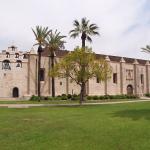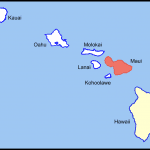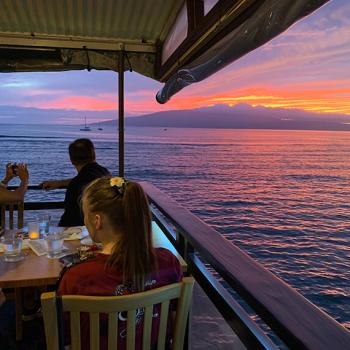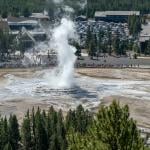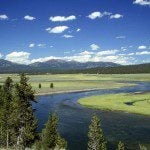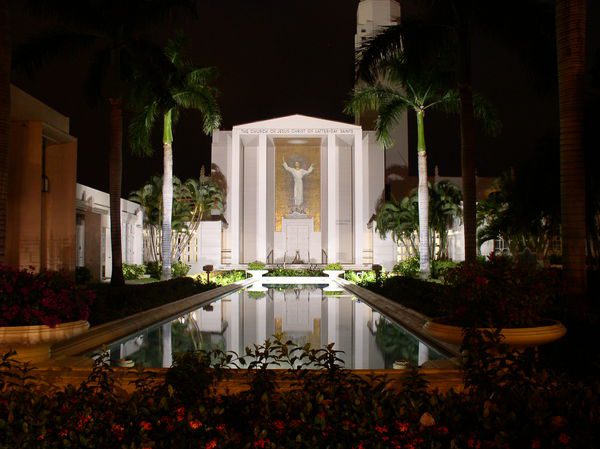
According to accounts preserved in Hawaiian mythology, the great gods Kāne (pronounced KAH-nay), Lono, Kū, and (possibly) Kanaloa existed before the creation of the world.
In the beginning, according to one tradition, nothing existed except a chaotic blackness called the “Po” (“night”). But Kāne awoke and, realizing that he was distinct from the Po, managed to break free from it. Thereafter, when Lono and then Kū perceived that Kāne had separated himself from the Po, they too freed themselves.
Next, Kāne created light, with which he pushed the darkness back. These three gods created all the lesser Hawaiian deities — most famous among them the fire and volcano goddess Pele, creator of the Hawaiian Islands. Then, they created our world to serve as a footstool for the gods.
Finally, the three gods gathered red clay from the four corners of the Earth, mixed it with their saliva, molded it into the image of Kāne (though with a head formed by Kāne himself from a specially selected white clay). When they had breathed life into the clay model — according to some accounts, it was Kāne alone who breathed that life into the clay figure — it became the first man.
The similarity of this account to Genesis 2:7, where “Adam” or “man” is created out of adamah (literally, “red clay”) and the Lord God breathes into him “the breath of life,” is obvious.
Associated with dawn, sun and sky, Kāne seems to have been the highest of the four great deities. He was the god of procreation and the ancestor of all humans, both chiefs and commoners.
Kū, god of politics and war, bore many names, including Kū kaʻilimoku (the “Snatcher of Land”). Uniquely among Hawaiian gods, his worship sometimes included ritual human sacrifice. Perhaps appropriately, he was associated with such animals as sharks and hawks.
Lono — sometimes called “Lono-makua” (“Lono the Provider”) — was linked with rainfall, fertility and agriculture, as well as with music and peace. Although the traditions are unclear and sometimes contradictory, there seems to have been a legend in which Lono manifested himself in human form, departing afterwards to “Kahiki” (likely Tahiti) with a promise to return.
Captain James Cook arrived at the Big Island of Hawaii in 1779 during the great harvest festival of Makahiki, sacred to Lono. Coincidentally, the rigging of his ship, HMS Resolution, resembled some of the artifacts associated with Lono-worship, and, just as ritual processions honoring Lono went clockwise around the island, Cook had sailed clockwise around the island before making landfall.
Some historians speculate that, for these and other reasons, the Hawaiians took Captain Cook to be a manifestation of Lono. When a member of his crew became ill and died, however — something not expected among deities—the Hawaiians became suspicious and much less compliant. And when a violent altercation broke out, Cook and several others among his crew were killed.
Some authorities theorize that Kanaloa was a lesser god who was created to preside over the dead and even that his worship may have arrived in Hawaii only after A.D. 1100, via a secondary Polynesian migration. Given his connection with the underworld, several commentators have tried to identify him as a god of evil and of death itself, permanently at war with Kāne. But this may reflect the viewpoint of European missionaries, who were perhaps seeking to associate the four great Hawaiian deities with the Christian Trinity and (in Kanaloa’s case) with Lucifer or Satan.
One legend says that Kanaloa tried to mimic the creation of man by Kāne, Lono and Kū, but that — unlike them — he was unable to bring his statue to life. So, humiliated, he challenged Kāne, vowing that Kāne’s human creations would be mortal and that, when they died, they would belong to him in the underworld.
Balanced against such accounts, however, is the fact that Kanaloa and Kāne were actually often associated with one another and worshiped together. They were apparently viewed as mutually complementary rather than opposed, and may even have been considered brothers.
Canoe builders, for example, would invoke Kāne during their labors, while sailors aboard completed boats would call upon Kanaloa for guidance and protection. Kāne was the lord of the area north of the sun’s annual path, while Kanaloa was the master of the area to its south. Some commentators have suggested that the two gods together represent a divine duality of wildness and domestication, much like the famous “yin and yang” of Chinese Taoism.
And now for just a bit of very amateur comparative thinking:
In Māori mythology, Tāne is the god of forests and of birds, and the son of Ranginui and Papatūānuku, the sky father and the earth mother. On Tahiti, Tāne was the god of peace and beauty.
In Māori, the common noun tāne means “husband,” “male,” “man.” (Not infrequently, it’s one of the identifiers on the doors of men’s restrooms.) In Hawaiian, the common noun kāne refers to a male such as a husband, or a brother-in-law, or a boyfriend. (Not infrequently, it’s one of the identifiers on the doors of men’s restrooms.)
All you need is a sound shift of t>k. And that sound shift is abundantly attested among the Polynesian languages. (Did you miss “‘Kahiki’ (likely Tahiti)” above?)
Think, for example, of the now-common Māori name for New Zealand, Aotearoa. It is typically translated as “[land of the] long white cloud,” where ao- equals “cloud,” –tea- (pronounced TEH-a) equals “white,” and -roa equals “long.” Now compare the massive volcanic peak on Hawaii’s Big Island called Mauna Kea (“White Mountain”).
Compare, too, the enormously important starchy plant taro, which, in Hawaii, is used to make poi. The word is taro in Tahitian, talo in Samoan and Tongan, taʻo in Marquesan, dalo in Fijian, and kalo in Hawaiian.
And then there’s the English term taboo. Meaning “prohibited” or “forbidden,” it comes directly from Tongan or Māori tapu, which is kapu in Hawaiian.
These predictable sound shifts intrigue me. If I had another few lifetimes, I think that I would spend at least a few solid months on Polynesian linguistics.
Remember the -roa (“long”) in Aotearoa? Think of the other great Hawaiian volcano, Mauna Loa (“Long Mountain”). A common shift between l and r is easily demonstrated in the Polynesian languages. For example, the Hawaiian term aloha is familiar to many even beyond Hawaii as a greeting. Among its rich and multiple meanings are “love” and “compassion,” perhaps even “empathy.” Its Polynesian cognates include talofa in Samoan, ta’alofa in Tuvaluan, aro’a in Cook Island Māori, and aroha in New Zealand Māori.
And here is an exceptionally interesting case: In Peru and Bolivia, where the sweet potato apparently originated and where it was probably first cultivated, one of the words for it in Quechua is khumara, or kumar (Ayacucho Quechua), or kumara (Bolivian Quechua). Those words are pretty obviously similar to the Polynesian name kumara and to its regional Oceanic cognates (umala, ʻuala, etc.). In Hawaiian, the sweet potato is called kumala. Along with compelling genetic evidence, this has led scholars to postulate pre-Columbian transoceanic contact between the Americas and Polynesia. An interesting thought, that.
Posted from Honolulu, O’ahu, Hawai’i



